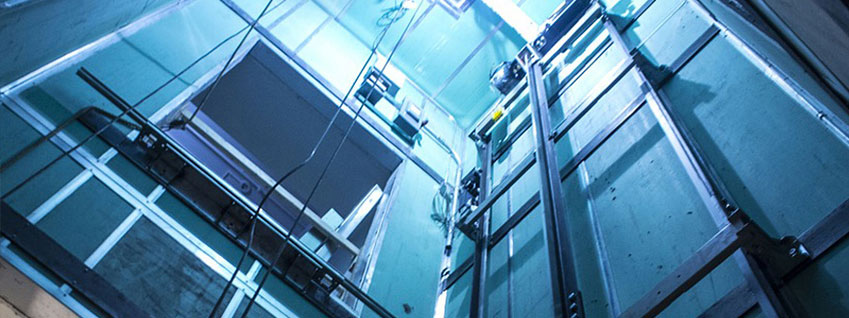Top Lift Companies in London: Offering Top Quality Installations and Maintenance
Top Lift Companies in London: Offering Top Quality Installations and Maintenance
Blog Article
Looking Into the World of Lifts: Typical Concerns Dealt With by Various Lift Systems
As we navigate via the upright transport systems of contemporary structures, elevators attract attention as an indispensable component of our every day lives. Nevertheless, behind their smooth operation exists a world of complex mechanisms that can sometimes come across challenges. From hydraulic lifts to grip systems and machine-room-less styles, each lift kind comes with its set of typical issues. Comprehending these obstacles is important for making certain the smooth functioning of these crucial systems. Allow's explore the complexities that underlie the procedure of lifts and the potential problems that can emerge, dropping light on the intricate web of lift devices.
Hydraulic Lifts
Hydraulic lifts, frequently liked for low-rise structures, utilize fluid pressure to control the motion of the lift auto (lift repair companies). This mechanism entails a hydraulic pump pushing oil into a cylinder, triggering the lift to relocate in the wanted instructions. While hydraulic elevators are understood for their smooth and silent operation, they do feature their very own collection of common problems
One prevalent trouble with hydraulic lifts is oil leak. Furthermore, problems with the control system, such as defective valves or a malfunctioning pump, can create disturbances in the elevator's movement.
Regular upkeep and timely repair work are important to make sure the smooth functioning of hydraulic elevators. By dealing with these common concerns proactively, building owners can decrease downtime and make sure the security and effectiveness of their vertical transport system.
Traction Lifts
When thinking about vertical transport systems in structures, another usual kind other than hydraulic lifts is the traction lift. Grip lifts operate making use of a system of ropes and counterweights that relocate the elevator car by clutching onto the hoist ropes. This system enables smoother and much faster vertical transport compared to hydraulic systems.
Among the common concerns dealt with by grip elevators is rope wear. The consistent motion of the ropes within the grip system can result in tear and wear over time, potentially creating the elevator to breakdown or become dangerous for use. Routine inspections and upkeep of the ropes are vital to make sure the lift's proper performance and safety and security.
One more issue that grip elevators might encounter is connected to the control system. Troubles with the control system can result in concerns such as unpredictable activity, hold-ups in reaction times, and even complete shutdowns. Normal screening and maintenance of the control system are vital to prevent such problems and make certain the lift's integrity.
Machine-Room-Less (MRL) Lifts

One of the key components of MRL lifts is the portable gearless traction equipment that is set up within the hoistway. This machine effectively drives the elevator vehicle without the need for large equipment discovered in conventional grip elevators. Furthermore, MRL elevators typically utilize a counterweight system to stabilize the automobile, more enhancing their power performance.
Regardless of their advantages, MRL elevators might encounter challenges associated with upkeep and repair work because of the constrained room for equipment installation. Availability for servicing parts within the shaft can be limited, requiring specialized training for service technicians. Correct upkeep timetables and normal inspections are critical go to guarantee the ongoing smooth procedure of MRL lifts.
Overloading and Weight Restriction Issues
Straining and weight limitation problems are vital issues in elevator procedures. Elevator producers design raises with details weight capabilities to guarantee passenger safety and security and devices durability.
When lifts are overwhelmed, it puts excessive stress on the motor, cables, and various other elements, possibly triggering malfunctions or break downs. If they identify excess weight, security mechanisms such as sensing units and overload sensors are in location to protect against lifts from moving. Furthermore, exceeding weight limitations can lead to boosted energy intake and wear and tear on the lift system.
To reduce straining issues, constructing managers must plainly show weight limits in elevators and educate residents on the importance of sticking to these restrictions - lift repair companies. Normal upkeep checks by certified service technicians can also assist make certain that elevators are operating within secure weight parameters. By attending to overloading and weight limit concerns proactively, structure owners can improve lift safety and security and efficiency
Electrical System Failings
Going beyond weight limitations in elevators can not only lead to mechanical concerns yet also possibly add to electric system failures within the lift framework. Electrical system failures are an important problem in lift operation, as they can you can look here cause unexpected closures, breakdowns, or even safety and security threats.
Normal upkeep and inspections are vital to determine and address prospective electrical problems immediately, guaranteeing the reliable and safe operation of elevator systems. By adhering to weight limits and carrying out regular electrical system checks, structure proprietors can mitigate the danger of electrical failings in elevators.
Final Thought

Hydraulic elevators, usually favored for low-rise buildings, utilize fluid pressure to regulate the motion of the lift auto.When thinking about vertical transport systems in structures, another usual type apart from hydraulic lifts is the traction elevator. Traction elevators operate utilizing a system of ropes and counterweights that move the lift automobile by grasping onto the hoist ropes. Unlike standard lifts that require a separate equipment room to house the devices, MRL lifts integrate most of the elements within the shaft, removing the need for a specialized equipment room.In final thought, lifts encounter common problems such as hydraulic breakdowns, grip system failures, and electrical system issues.
Report this page